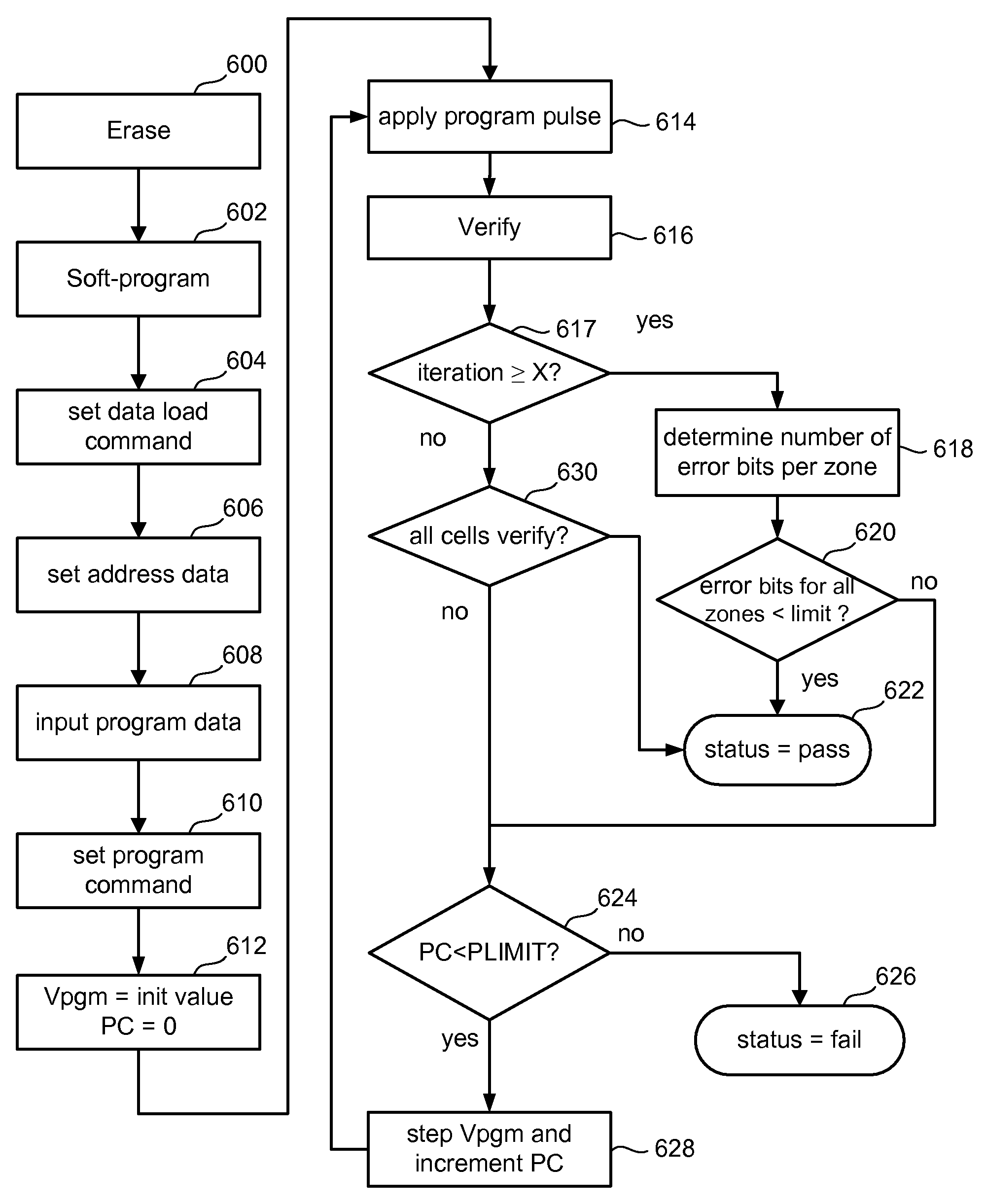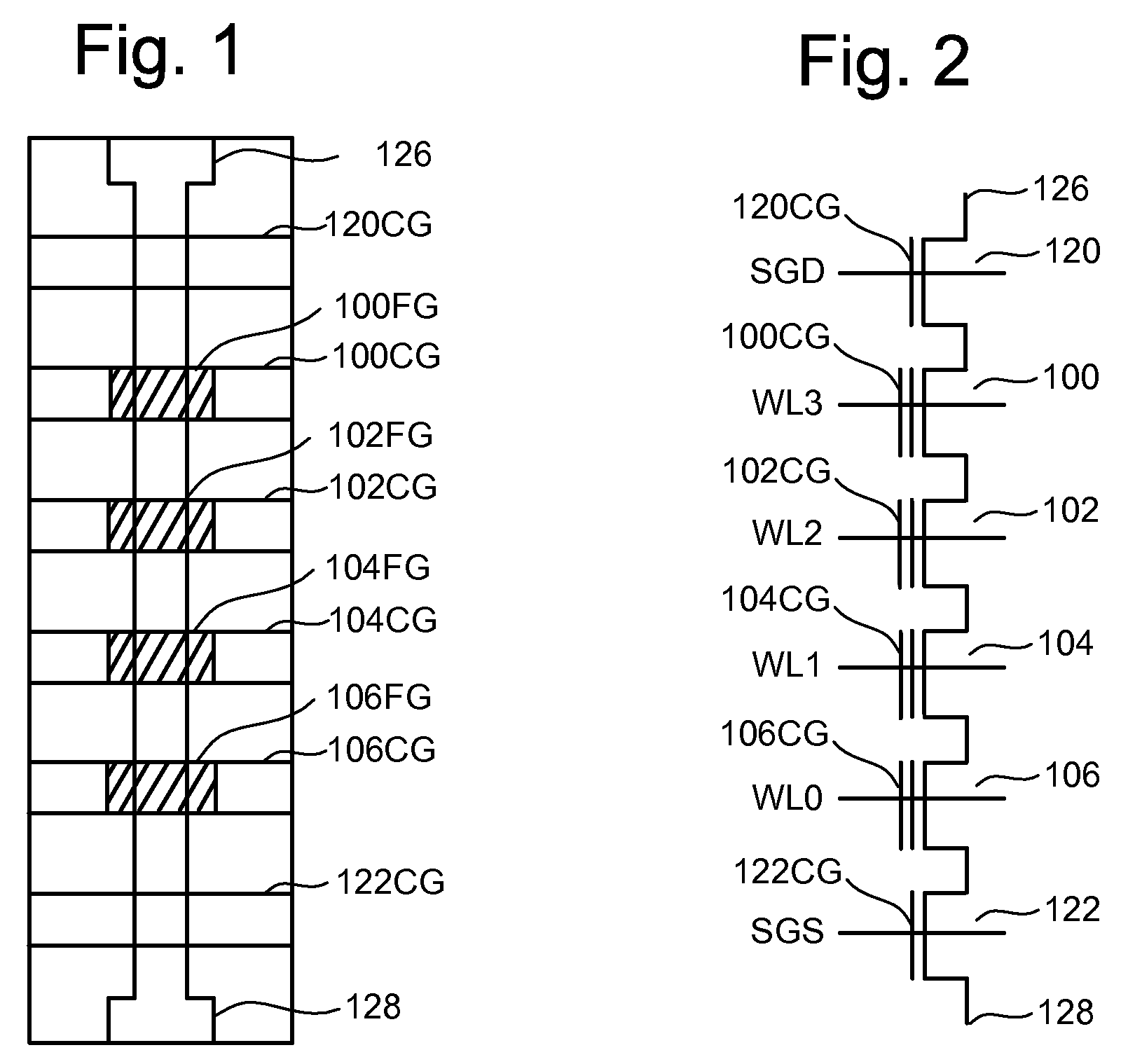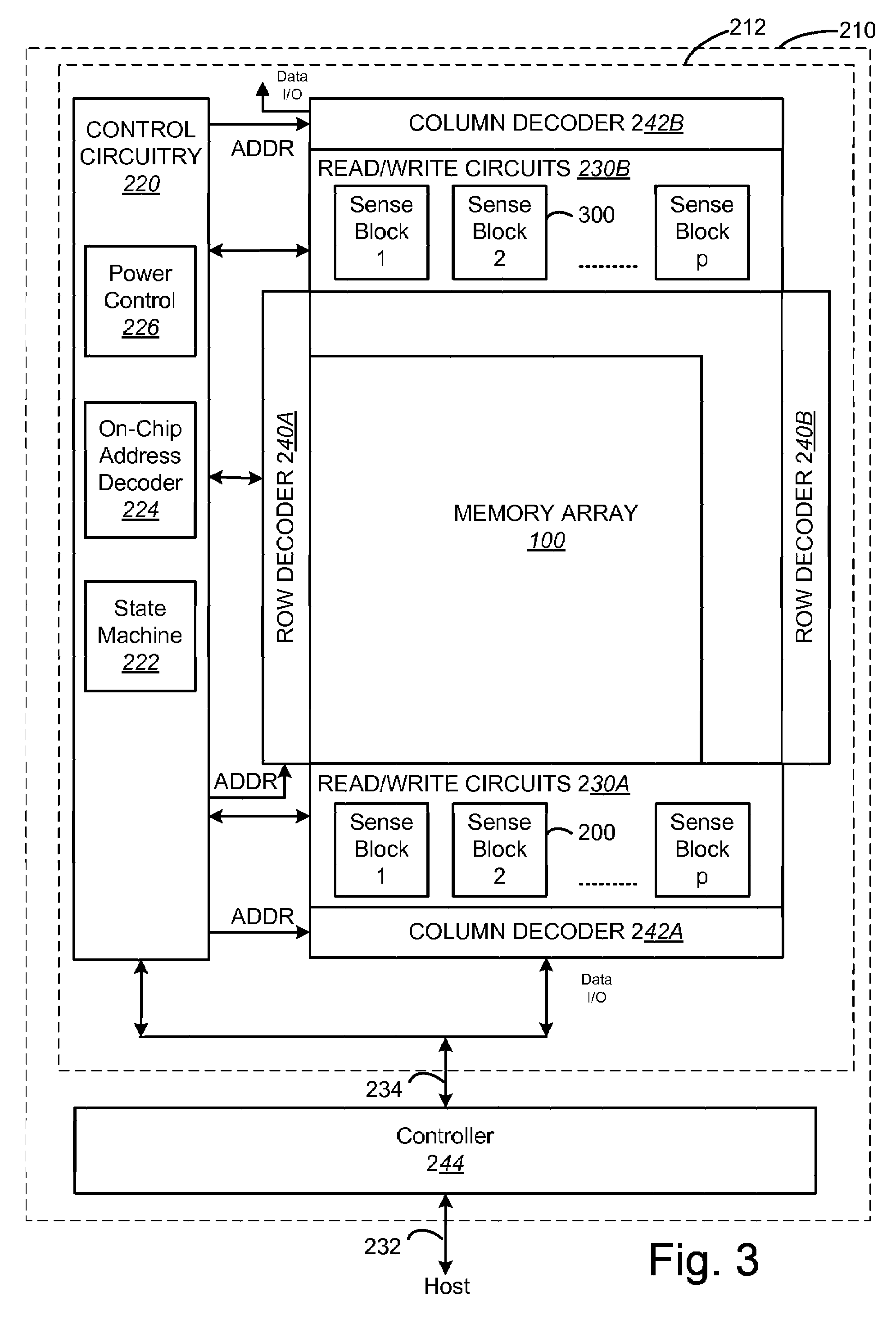Apparatus with segmented bitscan for verification of programming
a bitcan and apparatus technology, applied in the field of nonvolatile storage, can solve the problems of consuming substantial time and power for pulse sequences, cells are slower to program or erase, and cannot be programmed or erased in any way, so as to achieve the effect of more error bits and more error bits
- Summary
- Abstract
- Description
- Claims
- Application Information
AI Technical Summary
Benefits of technology
Problems solved by technology
Method used
Image
Examples
Embodiment Construction
[0050]One example of a memory system suitable for implementing the present invention uses the NAND flash memory structure. However, other types of non-volatile storage devices can also be used. For example, a so called TANOS structure (consisting of a stacked layer of TaN—Al2O3—SiN—SiO2 on a silicon substrate), which is basically a memory cell using trapping of charge in a nitride layer (instead of a floating gate), can also be used with the present invention. Another type of memory cell useful in flash EEPROM systems utilizes a non-conductive dielectric material in place of a conductive floating gate to store charge in a non-volatile manner. Such a cell is described in an article by Chan et al., “A True Single-Transistor Oxide-Nitride-Oxide EEPROM Device,” IEEE Electron Device Letters, Vol. EDL-8, No. 3, March 1987, pp. 93-95. A triple layer dielectric formed of silicon oxide, silicon nitride and silicon oxide (“ONO”) is sandwiched between a conductive control gate and a surface of...
PUM
 Login to View More
Login to View More Abstract
Description
Claims
Application Information
 Login to View More
Login to View More - R&D
- Intellectual Property
- Life Sciences
- Materials
- Tech Scout
- Unparalleled Data Quality
- Higher Quality Content
- 60% Fewer Hallucinations
Browse by: Latest US Patents, China's latest patents, Technical Efficacy Thesaurus, Application Domain, Technology Topic, Popular Technical Reports.
© 2025 PatSnap. All rights reserved.Legal|Privacy policy|Modern Slavery Act Transparency Statement|Sitemap|About US| Contact US: help@patsnap.com



